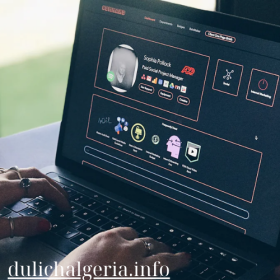Marketing automation software has become a crucial tool for businesses aiming to streamline their marketing efforts and drive more effective results. With a wide range of options available, it’s essential to understand the key features to look for in marketing automation software to ensure it aligns with your business goals and needs. Here are the critical aspects to consider:
1. Lead Management
Features to Look For:
- Lead Scoring: Assigns scores to leads based on their engagement and behavior, helping prioritize follow-ups.
- Lead Nurturing: Automated workflows to nurture leads through personalized content and interactions.
- Lead Segmentation: Categorizes leads based on criteria such as behavior, demographics, or engagement levels.
Benefits:
- Improved Efficiency: Streamlines lead management processes.
- Enhanced Targeting: Provides insights into lead quality and readiness.
2. Email Marketing Automation
Features to Look For:
- Automated Campaigns: Set up and trigger email campaigns based on user actions or predefined schedules.
- Personalization: Use dynamic content and personalization tokens to tailor emails to individual recipients.
- A/B Testing: Test different email variations to determine which performs best.
Benefits:
- Increased Engagement: Delivers relevant content at the right time.
- Enhanced Performance Tracking: Measures the effectiveness of email campaigns.
3. CRM Integration
Features to Look For:
- Seamless Integration: Integrates with CRM systems to synchronize customer data and interactions.
- Unified View: Provides a consolidated view of customer interactions across marketing and sales.
Benefits:
- Better Alignment: Ensures sales and marketing teams have access to the same customer information.
- Enhanced Customer Insights: Improves understanding of customer behavior and preferences.
4. Marketing Analytics and Reporting
Features to Look For:
- Performance Tracking: Monitors key metrics such as open rates, click-through rates, and conversion rates.
- Customizable Reports: Generates detailed and customizable reports to analyze campaign performance.
- ROI Analysis: Measures the return on investment for marketing activities.
Benefits:
- Informed Decision-Making: Provides data-driven insights to optimize marketing strategies.
- Performance Monitoring: Tracks the effectiveness of marketing efforts.
5. Customer Journey Mapping
Features to Look For:
- Journey Mapping: Visualizes the customer journey to understand interactions and touchpoints.
- Automated Workflows: Creates automated workflows that guide customers through their journey based on their actions.
Benefits:
- Enhanced Customer Experience: Delivers a more personalized and relevant experience.
- Efficient Campaign Management: Automates follow-ups based on customer behavior.
6. Social Media Integration
Features to Look For:
- Social Media Scheduling: Plan and schedule posts across multiple social media platforms.
- Social Listening: Monitors social media mentions and engagement.
- Social Analytics: Tracks social media performance and engagement metrics.
Benefits:
- Streamlined Social Media Management: Centralizes social media activities.
- Improved Engagement: Provides insights into social media interactions.
7. Content Management
Features to Look For:
- Content Creation: Tools for creating and managing content, including blogs, landing pages, and more.
- Content Personalization: Delivers personalized content based on user behavior and preferences.
- Content Scheduling: Automates the scheduling and publishing of content.
Benefits:
- Consistent Messaging: Ensures timely and relevant content delivery.
- Enhanced Content Strategy: Supports a more strategic approach to content marketing.
8. Marketing Automation Workflow
Features to Look For:
- Workflow Automation: Create and automate marketing workflows for various processes such as lead nurturing and customer onboarding.
- Trigger-Based Actions: Set up automated actions based on specific triggers or user behaviors.
Benefits:
- Increased Efficiency: Automates repetitive tasks and processes.
- Personalized Interactions: Ensures timely and relevant communication with customers.
9. SMS and Mobile Marketing
Features to Look For:
- SMS Campaigns: Automate SMS marketing campaigns and manage mobile communications.
- Mobile App Integration: Integrate with mobile apps for targeted push notifications.
Benefits:
- Extended Reach: Engages customers through mobile channels.
- Real-Time Communication: Provides instant communication with customers.
10. Integration Capabilities
Features to Look For:
- Third-Party Integrations: Ability to integrate with other tools and platforms such as e-commerce systems, analytics tools, and more.
- API Access: Provides API access for custom integrations and functionality.
Benefits:
- Enhanced Flexibility: Integrates seamlessly with existing tools and systems.
- Customized Solutions: Allows for tailored solutions based on specific needs.
Conclusion
When evaluating marketing automation software, it’s crucial to consider these key features to ensure the tool aligns with your marketing goals and requirements. Whether you need robust lead management, advanced analytics, or seamless integration with your CRM, selecting the right marketing automation tool can significantly enhance your marketing efforts and drive better results.


